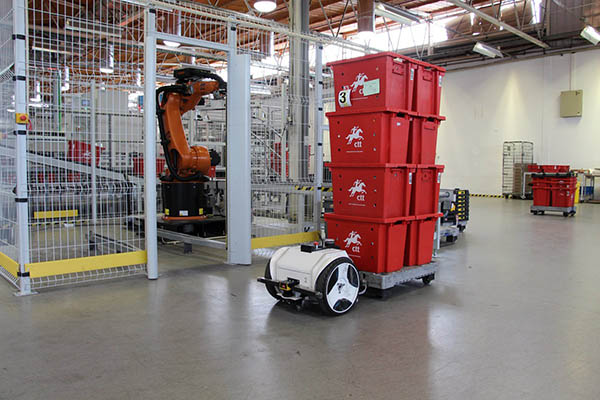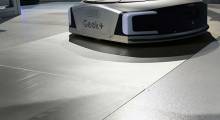MOV.AI today launched its Robotics Engine Platform, the latest version of its software. It said the platform is intended to enable robot manufacturers, systems integrators, and manual logistics vehicle makers to quickly build autonomous mobile robots, or AMRs, that can be used in 85% of dynamic environments.
“Until now, AMR manufacturers had to choose between long and expensive in-house development and third-party, black-box solutions with hardware limitations,” stated Motti Kushnir, CEO of MOV.AI. “We are changing that. For the first time, companies have everything they need to easily build advanced robots that are simple to deploy and operate.”
“By providing an end-to-end system that contains everything that is needed to create great robot software—whether it’s integrating third-party hardware; selecting and integrating advanced autonomy algorithms, visual deployment, and operation tools; or integration with automation environments—MOV.AI frees manufacturers to focus on what makes them unique,” he added.
AMR market needs software to grow
The demand for mobile robots (AMRs) is exploding. By 2026, The market for automated guided vehicles (AGVs) and AMRs is expected to reach $13.2 billion, with a growth rate of about 35%, according to Research and Markets.
In the forklift market, automated vehicles are expected to rise from 1% to 33% in 2030, according to ABI Research. Similarly, Fortune Business Insights predicted that AMR demand will experience a compound annual growth rate (CAGR) of 23.7% between 2021 and 2028.
Despite growing demand, logistics vehicle manufacturers and new players find it hard to develop AMRs and automated logistics vehicles that meet customer expectations. There has been a lack of development tools and enterprise-grade robotics software, said MOV.AI.
The Robotics Engine Platform can speed up robot development, ensure deployment success, and enable smooth operation and control of robot fleets, said the company. It is based on the Robot Operating System (ROS) and has a Web-based user interface.
“Robot development is complex, and there are very few development tools to speed it up,” said Limor Schwietzer, founder and chief technology officer of MOV.AI. “ROS is great and constantly evolving, but it was built for robotics researchers that do not need to deal with enterprise needs such as quality, versioning or security.”
“We built a platform that non-expert developers can use to pick and choose the functionality they need and easily configure it into their robot software,” he said. “We also added all the tools needed for the important tasks of deployment and operation.”
New version features
MOV.AI, which has offices in Tel Aviv, Israel, and Lisbon, said the Robotics Engine Platform includes the following features:
Robot development tools and advanced functional algorithms:
- Visual ROS-based integrated development environment (IDE)
- An open plug-in framework that allows developers to easily integrate MOV.AI and third-party, off-the-shelf algorithms and drivers
- Advanced autonomy algorithms:
- 3D SLAM (simultaneous localization and mapping) —enabling +/-2 cm localization accuracy in 85% dynamic environments
- Autonomous navigation—ensures safety and optimal movement in highly dynamic environments by continuously adjusting the path plan according to real-time data
- Automated obstacle avoidance and risk prevention—integrates advanced sensing and localization with autonomous navigation and control to reduce the risks involved in highly dynamic environments
- Automated sensor calibration to ensure accuracy and avoid degradation due to accidents, vibrations, or sudden temperature changes
- 3D physics simulator—integrated into the MOV.AI IDE. Speed up development without compromising on quality by testing robot software without the need for a physical robot
- Enterprise-grade software tools - debugging, versioning, CI/CD and security, all available directly in the IDE
Integrated deployment tools:
- Scene editor—easily define an operational layer, including zones, keypoints, virtual paths, and more, for behavior planning and real-time decision making
- Behavior editor—a visual interface that allows robot mission automation
- Task management—define tasks using task and data templates, enabling the automatic generation of hundreds of task instances and integrating them with the scene
- Integrations—with the automation environment and with legacy hardware and external sensors and actuators; share data with diverse sources
Tools for robot and robot fleet operation:
- Interruption-free software updates and cybersecurity updates
- Task control—ad hoc prioritization to meet changing demands
- Fleet management
- Analytics, alerts, and calls to action
The Robotics Engine Platform can change how AMRs are developed, in terms of time to market, cost, and flexiblity, said MOV.AI. It can remove the barriers to robot software development, allowing manufacturers to focus on their core competencies, according to the company.
Article topics
Email Sign Up
















